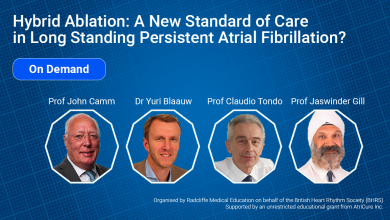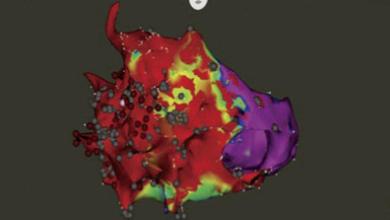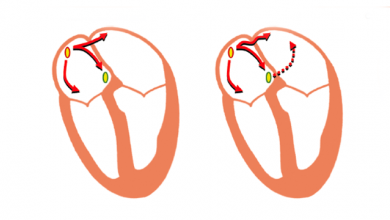Search results
Hybrid Ablation
Video Series
Author(s):
Chen Wei
,
Pierre Qian
,
Usha B Tedrow
,
et al
Added:
3 years ago
Ventricular tachycardia (VT) is a life-threatening sequela found in patients with cardiomyopathy. ICDs can terminate ventricular arrhythmias, but recurrent device shocks lead to reduced quality of life and are associated with higher mortality.1–5 Radiofrequency catheter ablation has emerged as an effective treatment for VT refractory to anti-arrhythmic therapy and has also been shown to reduce…
View more
Author(s):
Sebastiaan RD Piers
,
Katja Zeppenfeld
Added:
3 years ago
Over the last 20 years ventricular tachycardia (VT) ablation has evolved from a treatment modality for selected patients withrecurrent haemodynamically tolerated VT (which can be mapped during ongoing arrhythmia), to a therapeutic option for patients with tolerated and untolerated VT using substrate-based ablation strategies.1 The substrate for VT after myocardial infarction (MI) consists of…
View more
Author(s):
Saagar Mahida
,
Benjamin Berte
,
Seigo Yamashita
,
et al
Added:
3 years ago
Since the first catheter ablation for cardiac arrhythmia more than three decades ago, ablation technology has continually evolved at a rapid pace. Much of the early progress in the field was made in ablation of supraventricular tachycardias. Following a seminal study from Haïssaguerre et al.1 in 1998, which demonstrated that pulmonary vein triggers are important sources of atrial fibrillation (AF…
View more
Author(s):
Fouad Khalil
,
Konstantinos C Siontis
,
Gabor Bagameri
,
et al
Added:
3 years ago
Catheter-based ablation has been a well-established tool in the treatment of ventricular tachycardia (VT). However, the effectiveness of catheter ablation may be limited by its ability to access sites of arrhythmogenic tissue and achieve adequate lesion size in target areas without risking collateral damage. Antiarrhythmic surgery would be an effective alternative in such situations. Despite the…
View more
Author(s):
Charlotte Brouwer
,
Mark G Hazekamp
,
Katja Zeppenfeld
Added:
3 years ago
The reported incidence of congenital heart disease (CHD) depends on the number of trivial lesions included, such as atrial and ventricular septal defects (ASDs and VSDs). Moderate-to-severe CHD numbers remain stable with 6 per 1,000 live births.1 Survival into adulthood has improved dramatically over the last 25 years and has been driven mainly by a decreased mortality in moderate and severe…
View more
Author(s):
Adam J Graham
,
Michele Orini
,
Pier D Lambiase
Added:
3 years ago
Recurrent episodes of ventricular tachycardia (VT) in patients with structural heart disease are associated with increased mortality and morbidity, despite the life-saving benefits of implantable cardiac defibrillators (ICDs).1,2 Because ICD therapies are abortive and do not alter the underlying arrhythmogenic substrate, their reduction becomes important, especially as recurrent shocks can cause…
View more
Author(s):
Roland R Tilz
,
Charlotte Eitel
,
Evgeny Lyan
,
et al
Added:
3 years ago
Ventricular tachycardia (VT) is associated with increased mortality in patients with a history of MI. ICD implantation is currently the standard of care for the prevention of sudden cardiac death, and contributes to a reduction of total mortality.1 Despite effective treatment of ventricular arrhythmias with the use of anti-tachycardia pacing (ATP) or shocks, ICDs do not prevent VT. Furthermore,…
View more
Value of Sinus Rhythm Mapping
Author(s):
Mathijs S van Schie
,
Natasja MS de Groot
Added:
1 year ago
Article
Author(s):
Simon Ermakov
,
Melvin Scheinman
Added:
3 years ago
Arrhythmogenic right ventricular cardiomyopathy (ARVC) is an inherited cardiomyopathy characterised by progressive replacement of the ventricular myocardium by fibrofatty tissue.1 Patients with the disease are predisposed to ventricular arrhythmias, heart failure and sudden cardiac death.
Pathophysiology
ARVC has a strong genetic basis with most disease variants displaying an autosomal dominant…
View more















 « First
« First